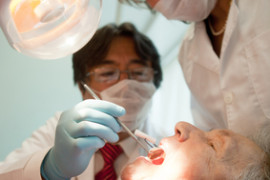Inflammation is the key cause for most of our serious chronic diseases—cardiovascular disease, diabetes, cerebrovascular disease, rheumatoid arthritis, and Alzheimer’s disease, to name a few—and oral inflammation plays a major role.
Dental professionals know that periodontal disease is an inflammatory disease. Cardiologists know that cardiovascular disease is an inflammatory disease. Yet it is not common practice for these two healthcare professions to cross-refer patients.
Periodontal disease and cardiovascular disease have been inextricably linked with level-A evidence, according to the American Heart Association. Recent research in Stroke showed that periodontal disease is an important risk factor for stroke. Most importantly, it showed that periodontal treatment reduces risk for stroke. A study published in Circulation showed a direct connection between oral pathogens (associated with periodontal disease, endodontic lesions, and caries) and acute heart attacks. Oral bacteria were found in every thrombus! It appears that up to one half of all heart attacks are being triggered by oral pathogens.
The dental profession must now look at oral inflammation from the viewpoint of bleeding sites, periodontal pocketing, and the microbial burden that exists in an individual’s oral apparatus. This inflammation is exacerbated by genetic predisposition in the 33% of Americans who are IL-1 positive.
We can reduce the inflammatory burden on our patients’ hearts by coordinating this advanced professional dental care with cardiologists and other medical professionals, especially when it comes to specific biomarkers that are known to correlate with increased risk for inflammatory disease:
- Lp-PLA2—Tells us if the arteries around the heart are inflamed. This is the most important test in assessing hidden risk for heart attack and stroke, and periodontal therapy is one way to reduce Lp-PLA2 levels.
- A1c—Tells us how the patient’s blood sugar levels are being regulated. Elevated A1c is an indicator for insulin resistance or diabetes, both of which have a direct connection with periodontal disease.
- hsCRP—Tells us if there is an infection somewhere in the body. With an elevated hsCRP, infection is present, and with 80% of American adults suffering from some form of periodontal disease, there’s a good chance it’s because of the mouth.
These three numbers, in addition to the microbial load and genetic predisposition (determined by salivary diagnostics) help dental and medical professionals work together to develop specific, customized treatment protocols based on what patients present with.



